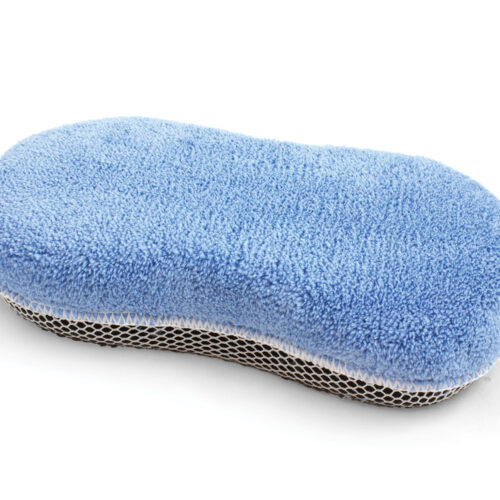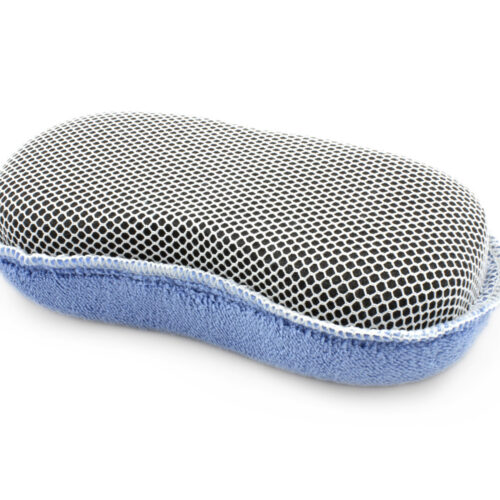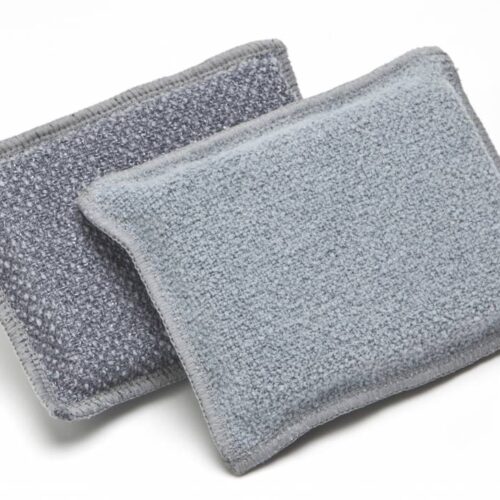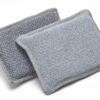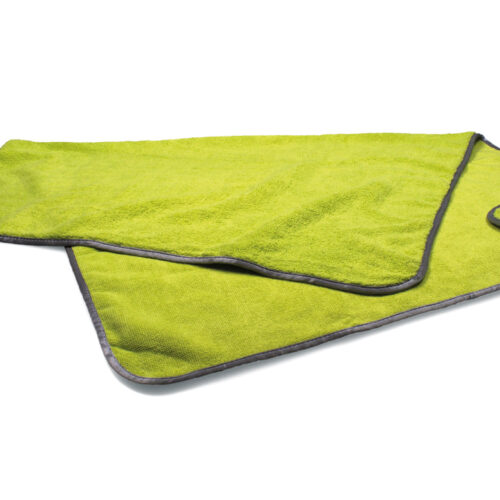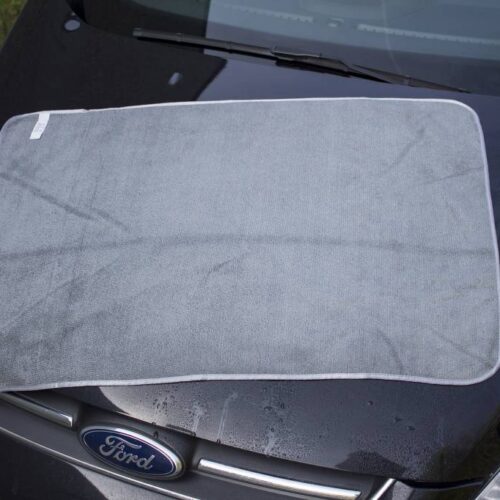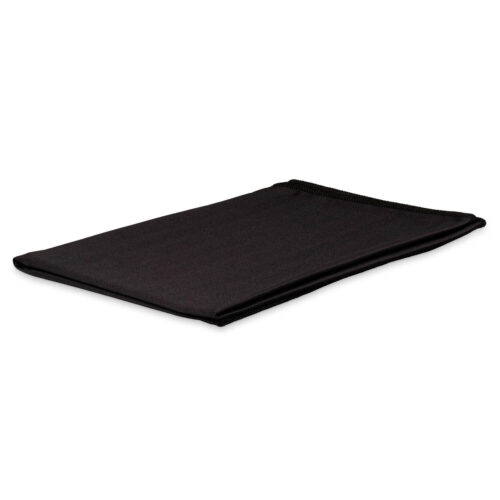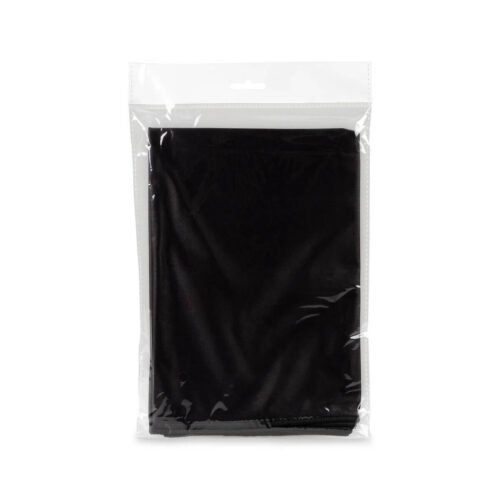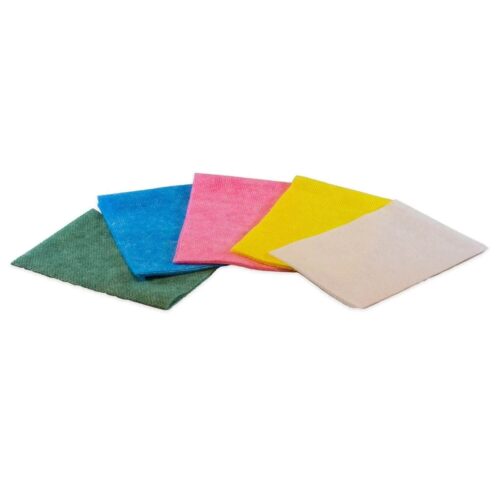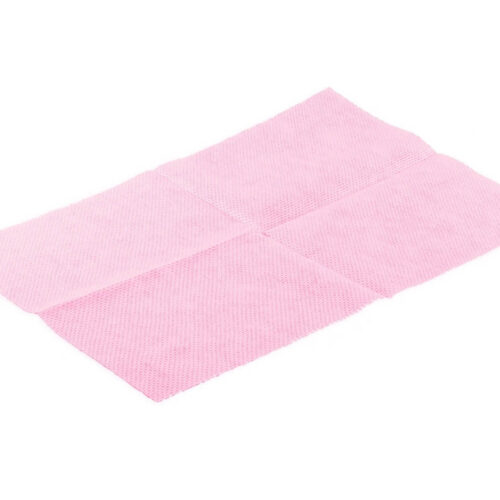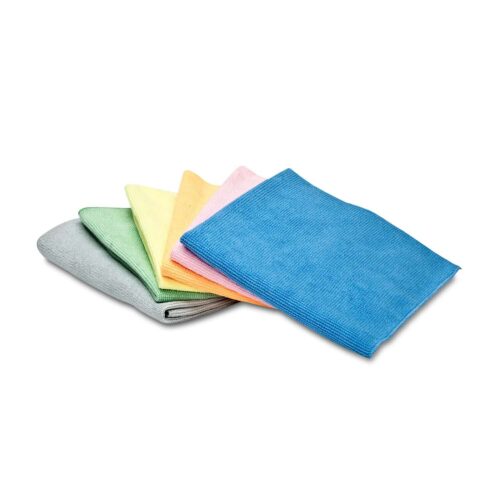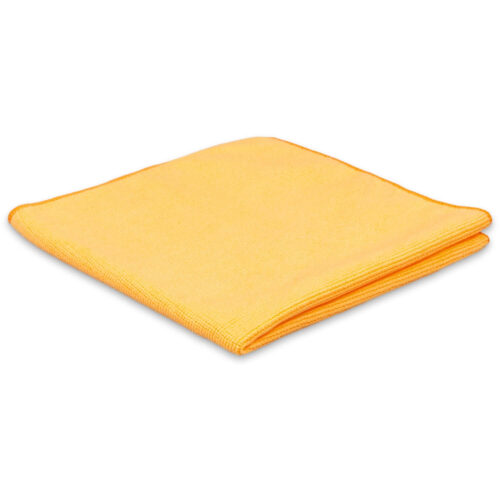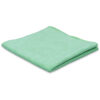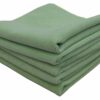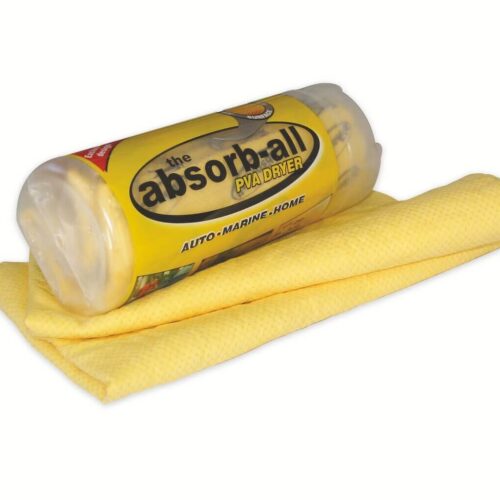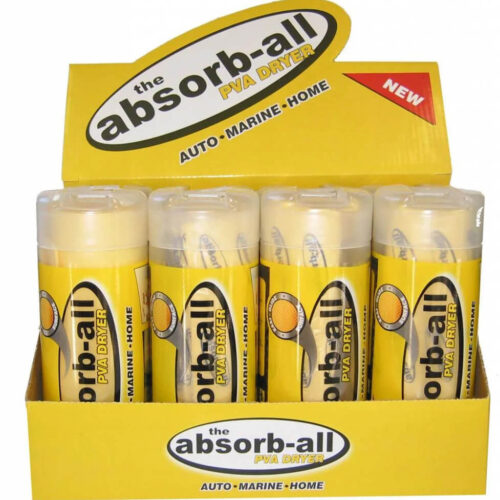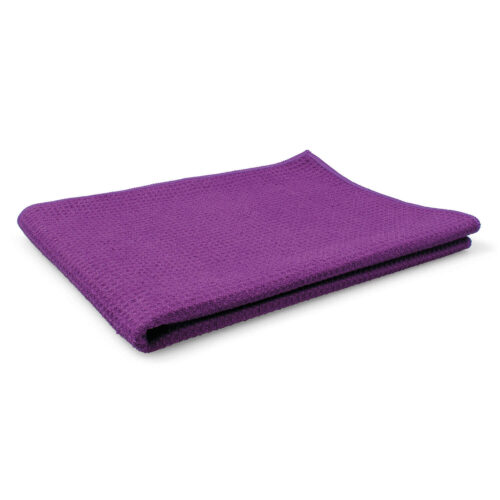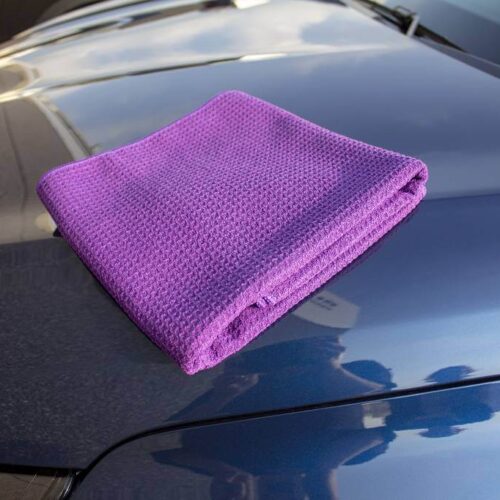Microfiber cloths & towels have revolutionized cleaning practices worldwide. Comprising fine synthetic fibers, these cloths are celebrated for their ability to attract and hold dust, dirt, and liquid. Unlike traditional cotton cleaning cloths, microfiber traps particles, ensuring a cleaner, more efficient wipe-down. Given their widespread use in both domestic and professional settings, understanding the proper care and maintenance of microfiber cloths is essential. This guide delves into the best practices for washing microfiber cloths and towels, aiming to extend their lifespan and maintain their remarkable cleaning capabilities.
Key Takeaways
- Like any fabric, microfiber cloths need special care. Wash them alone in cool or warm water with mild detergent.
- Avoid fabric softener, bleach, and high heat. These can damage the tiny fibers and make them less effective.
- Air dry or tumble dry on low for maximum lifespan. High heat can also harm the fibers.
Importance of Proper Washing Techniques
The longevity and effectiveness of microfiber cloths heavily rely on how they are washed and maintained. Incorrect washing techniques can damage the fibers, thereby reducing their efficiency and lifespan. Proper cleaning not only preserves the microfibers but also ensures that they continue to perform at their best. From choosing the right washing method to selecting suitable detergents, this guide offers detailed instructions to ensure that your microfiber cloths remain a dependable cleaning tool.
Preparing Microfiber Cloths for Washing
Before washing, it’s crucial to prepare microfiber cloths correctly. Begin by shaking them out to dislodge any loose debris or dirt. This step is vital for preventing the dirt from circulating in the wash water, which could cause it to settle back onto the cloths. Whether you choose to hand wash or machine wash, this initial preparation helps to ensure a more effective cleaning process.
Hand Washing vs. Machine Washing
Deciding between hand washing and machine washing depends on the condition of the cloths. Hand washing is suitable for lightly soiled cloths and can be gentler on the fibers. In contrast, machine washing is more convenient for heavily soiled or stained cloths, offering a deeper clean.
Hand Washing Microfiber Cloths and Towels
Hand washing microfiber cloths is a simple yet effective way to clean them. Follow these steps:
- Begin by shaking the cloth to release any loose dirt.
- Fill a basin with cool or warm water. Hot water can damage the fibers, so avoid using it.
- Submerge the microfiber cloths in the water. Gently agitate them by hand, focusing on heavily stained areas.
- Let the cloths soak for about 15-20 minutes.
- After soaking, rinse the cloths thoroughly under running water. Wring out excess water gently, being careful not to stretch the fibers.
Hand washing is ideal for maintaining the integrity of the microfibers, ensuring they continue to effectively trap dirt and debris.
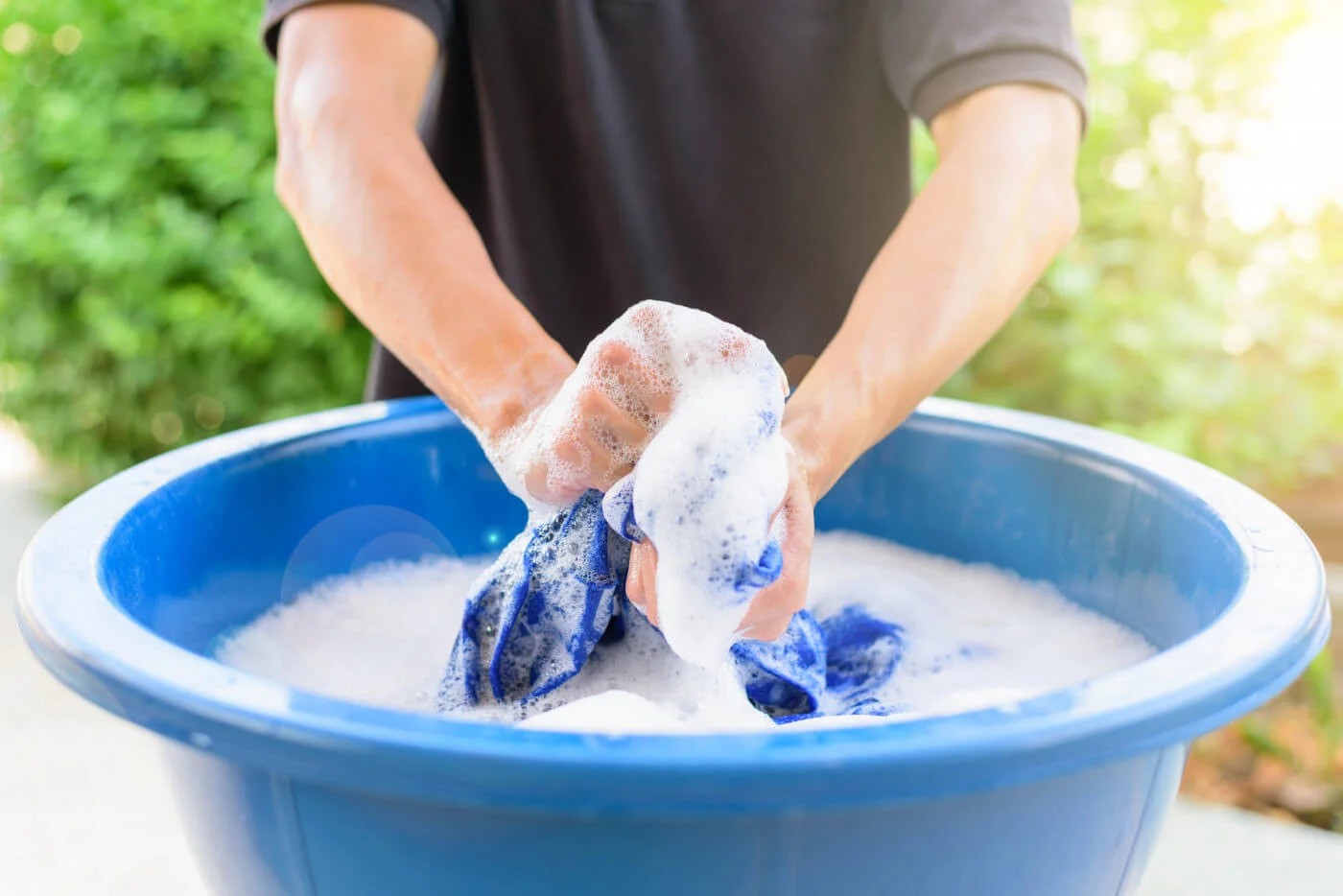
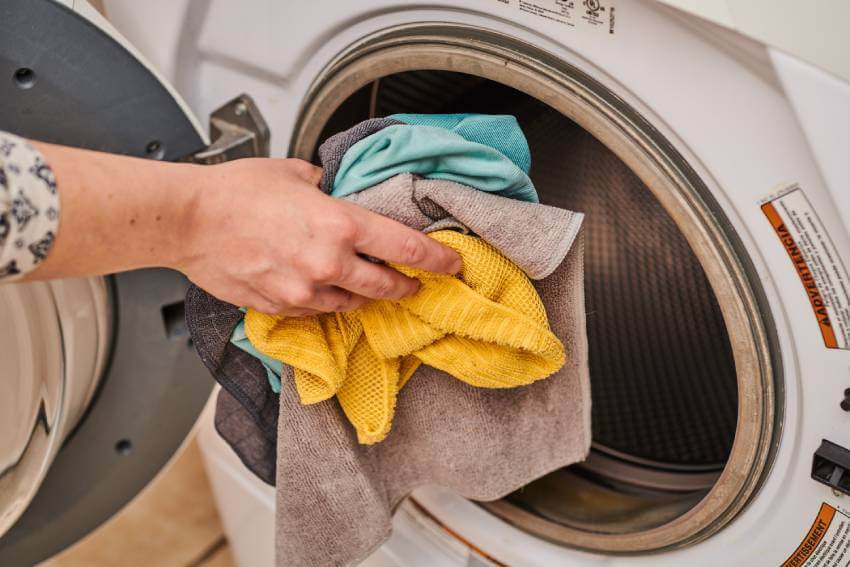
Machine Washing Microfiber Cloths
Machine washing microfiber cloths requires a gentle approach to preserve their cleaning efficacy:
- Before washing, shake the cloths to remove excess dirt.
- Use cold or warm water. Hot water can damage the microfibers.
- Opt for a gentle, fragrance-free detergent. Avoid using fabric softeners or additives that can coat and clog the fibers.
- If the cloths have a persistent odor, adding a tablespoon of white vinegar can help neutralize it.
- Allow the machine to agitate the cloths for half of the cycle, then pause for a 15-20 minute soak.
- Resume and complete the wash cycle.
These steps ensure that the microfibers are cleaned thoroughly without causing damage.
Temperature Settings and Detergent Choices
The ideal washing temperature for microfiber cloths is below 82 °C. A mild, low-suds detergent is recommended. Fabric softeners and bleach should be avoided as they can degrade the microfiber’s cleaning ability.
Wash New Microfiber Towels First
It’s essential to wash new microfiber towels before their first use. Manufacturers often apply a silicone coating during production, which can impede the cloth’s ability to absorb liquids effectively. Washing new towels removes this coating, thus unlocking the full potential of the microfibers.
For the inaugural wash, it’s recommended to use a combination of white vinegar and laundry detergent. Add half a cup of white vinegar to the wash water, along with about half the usual amount of laundry detergent. The vinegar plays a crucial role in this process; it helps set the colors, ensuring they remain vibrant and fade less over time. Additionally, vinegar aids in removing any residual substances left from the manufacturing process, such as lint from the weaving.
This initial wash primes the towels for optimal performance. The removal of the silicone coating not only enhances the towels’ absorbency but also ensures that they are ready to tackle cleaning tasks more effectively from their very first use.
How Often Should I Wash Microfiber Towels?
Microfiber cloths and towels should be washed frequently to maintain their cleanliness and effectiveness. If you’re using these towels for light tasks like dusting, they can be used several times before needing a wash. However, for heavier cleaning, such as in kitchens or bathrooms, it’s best to wash them after each use to remove dirt and bacteria.
For personal care or gym use, washing after every use is recommended to maintain hygiene. Consistent washing prevents the buildup of bacteria and odors. Remember to use a gentle detergent and wash according to the guidelines provided earlier in this article. Regular washing not only ensures cleanliness but also maintains the high absorbency and cleaning efficiency of your microfiber towels.
Drying Microfiber Cloths: Air-Drying and Machine Drying
Proper drying of microfiber cloths is as crucial as washing them correctly. There are two effective methods: air-drying and machine drying.
Air-Drying:
- After washing, shake out the cloths to remove any excess water.
- Hang the cloths in direct sunlight if possible. Sunlight has natural disinfecting properties.
- If drying indoors, choose an area with good air circulation.
Machine Drying:
- Dry microfiber towels separately from other items.
- Before and after drying microfiber cloths, clean the dryer’s lint trap to avoid lint transfer.
- Do not use dryer sheets or balls, as they can leave a residue on the microfibers.
- Use a low heat or air-dry cycle to prevent damaging the fibers.
Both methods ensure that the cloths dry efficiently without compromising their structure or cleaning ability.
Maintenance Tips for Longevity of Microfiber Cloths
Proper maintenance of microfiber cloths is crucial for maximizing their efficiency and lifespan. Here are essential tips:
- After each use, shake the cloth to remove loose debris and rinse it in warm water. This practice helps to dislodge dirt and maintain the cloth’s cleaning effectiveness.
- Microfiber excels with just water, but for tougher jobs, choose mild, non-abrasive solutions. Remember, harsh chemicals can damage the fibers and hinder their cleaning power. However, knitted microfiber cloths, like the Triko Piko, can be used with bleach and other aggressive chemicals. For enhanced chemical resistance and even heavy-duty cleaning, consider knitted microfiber cloths. They provide versatility for diverse cleaning needs.
- Store microfiber cloths separately from other cleaning materials to avoid cross-contamination and the transfer of lint or debris.
- Clean your microfiber cloths regularly to prevent the buildup of dirt and bacteria. Regular cleaning also ensures that the cloths maintain their absorbency and cleaning efficiency.
- Do not iron or expose microfiber cloths to high heat sources. Excessive heat can damage the fibers, leading to a loss of effectiveness.
- Regularly inspect your microfiber cloths for signs of wear and tear. Replace them if they become overly worn or lose their effectiveness.
By adhering to these maintenance practices, you can ensure that your microfiber cloths remain a reliable and effective cleaning tool for various tasks.
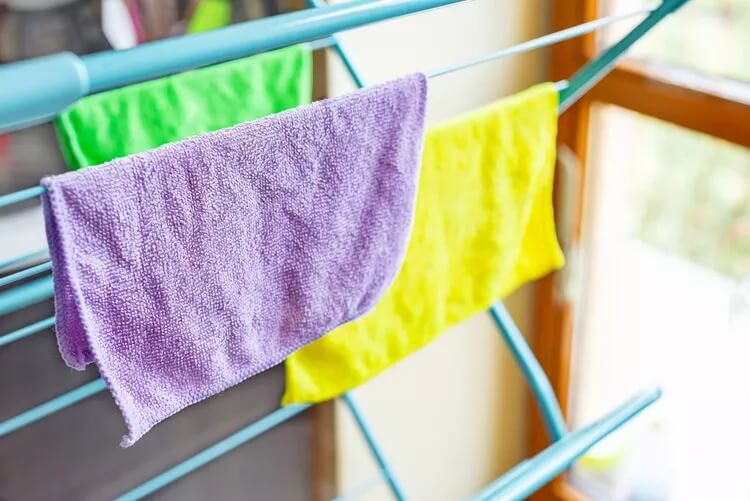
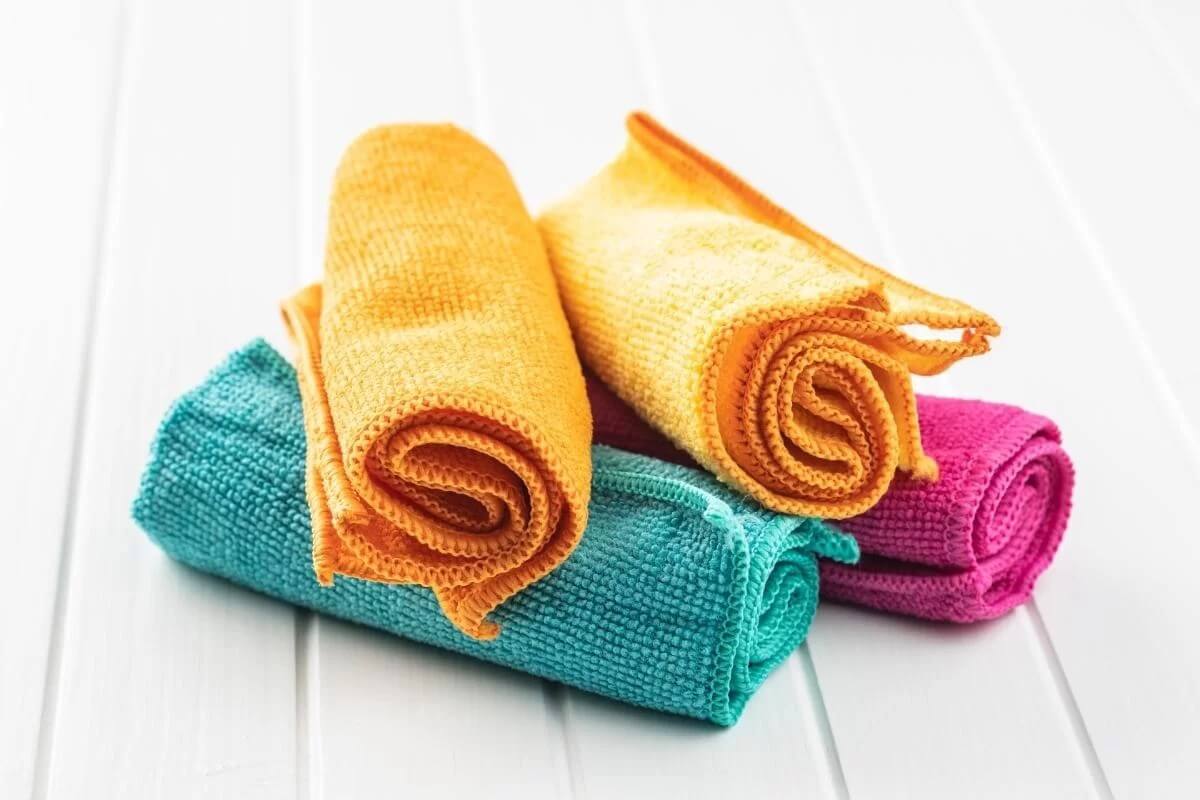
Common Mistakes to Avoid When Washing Microfiber Cloths
Ensuring the durability and functionality of microfiber cloths involves avoiding common washing mistakes:
- Washing microfiber cloths with cotton or other lint-producing fabrics can lead to lint accumulation on the microfiber surface, reducing its cleaning capability.
- Don’t overload the washing machine. Microfiber cloths expand and absorb more water than cotton, requiring more room to agitate and release trapped dirt.
- Avoid using hot water as it can damage the microfibers. Stick to cold or warm water for optimal cleaning without causing harm to the cloths.
- Steer clear of harsh detergents, fabric softeners, and bleach. These can coat and clog the microfibers, significantly diminishing their effectiveness.
- Avoid high heat in the dryer. High temperatures can melt or damage the fibers. Opt for air-drying or low heat settings.
- Always shake out the cloths before washing to remove loose debris. This prevents the redistribution of dirt during the wash cycle.
Tips & Tricks for washing microfiber towels
Knowing how to properly wash microfiber towels will help you keep them in good shape for effective cleaning.
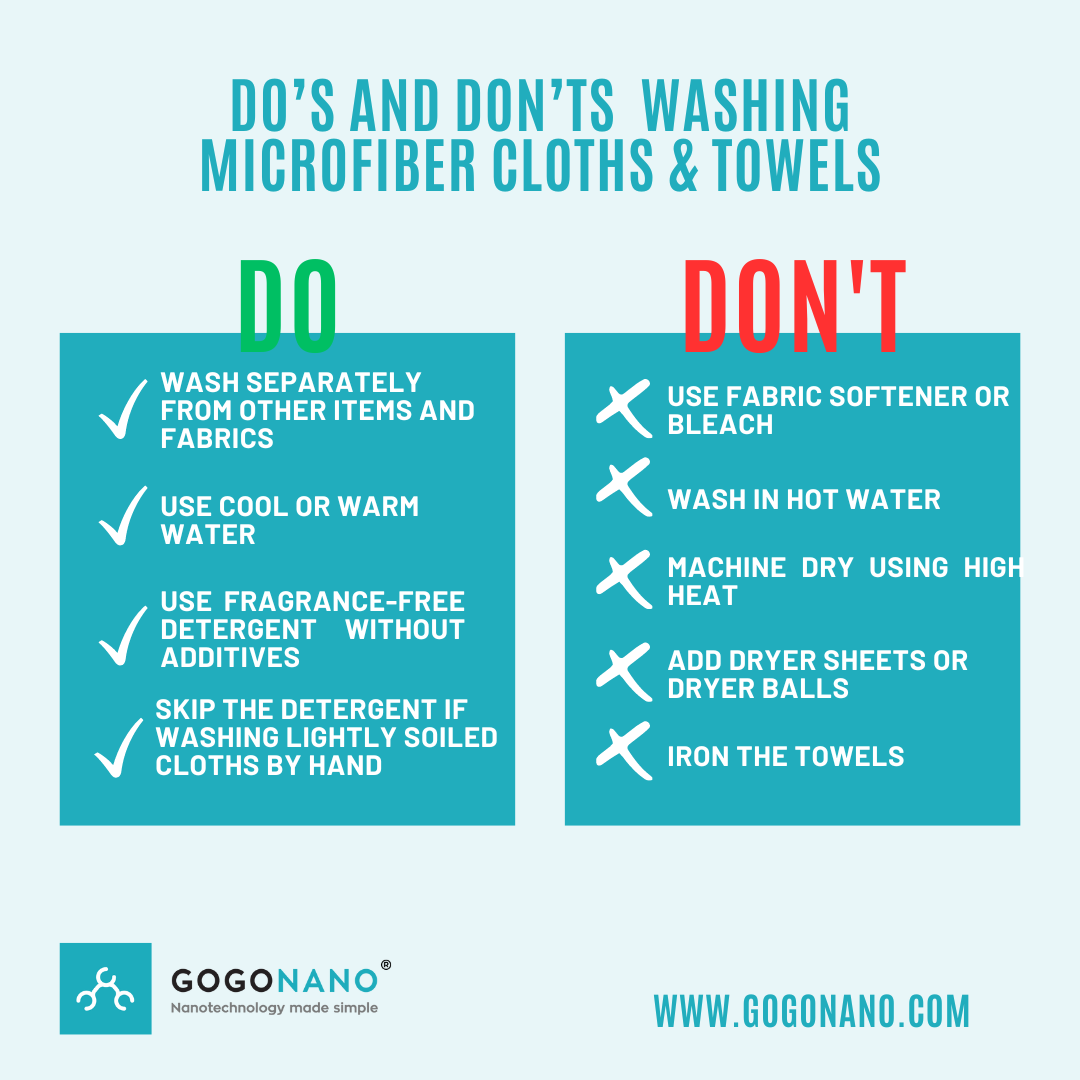
Frequently Asked Questions About Washing Microfiber Cloths & Towels
Can microfiber cloths be washed with other laundry?
When washing microfiber cloths, it’s best to keep them separate from other laundry. Microfiber is designed to attract small particles, including lint from other fabrics. Washing microfiber towels with cotton or other materials can compromise their effectiveness by clogging the fibers with lint. To properly clean microfiber cloths, wash them together in a separate load using warm water and a mild, liquid detergent. Avoid powder detergents as they can leave residue. By washing microfiber cloths separately, you ensure they maintain their superior cleaning properties and extend their lifespan. This method of washing microfiber towels helps preserve their electrostatic charge, which is crucial for their dust-attracting ability.
How often should microfiber cloths be replaced?
The frequency of replacing microfiber cloths depends on how often you wash microfiber cloths and how well you maintain them. With proper care, high-quality microfiber cloths can last for 300-500 washes, typically 1-2 years of regular use. However, replace them sooner if you notice decreased absorbency, visible wear and tear, persistent odors, or stains that won’t come out even after washing microfiber towels properly. To extend their life, avoid using fabric softeners or bleach when you clean microfiber cloths. When washing microfiber cloths, use warm (not hot) water, and when drying microfiber cloths, air dry or tumble dry on low heat. Rotating your cloths and using different ones for various tasks can also help distribute wear more evenly.
Can I use bleach to clean microfiber cloths?
It’s always best to avoid using bleach. Bleach can break down the delicate microfibers, reducing their cleaning effectiveness and lifespan. Instead, when you clean microfiber cloths, consider these alternatives: add white vinegar to the rinse cycle, use a diluted hydrogen peroxide solution for spot-treating, or try oxygen-based bleach which is gentler. Hot water (above 60°C/140°F) can effectively sanitize when washing microfiber towels without chemicals. Always check the care label for specific instructions on how to wash microfiber cloths. By avoiding bleach and using these methods, you’ll ensure your microfiber cloths remain effective for longer.
Is it safe to use fabric softener when washing microfiber cloths?
Never use fabric softeners when washing microfiber cloths. Fabric softeners leave a waxy coating that clogs the spaces between microfibers, dramatically reducing their ability to clean effectively. This coating makes microfiber less absorbent compromising their primary function. Additionally, fabric softeners reduce the static charge that helps microfiber attract dust and dirt. When washing microfiber towels, use only a mild, liquid detergent. If you want to soften your cloths, add a cup of white vinegar to the rinse cycle when you wash microfiber cloths. This helps remove detergent buildup without compromising the cloth’s effectiveness. Always avoid high heat when drying microfiber cloths to maintain their quality.
What’s the best way to dry microfiber cloths?
The most optimal way to dry microfiber cloth is air-drying. When drying microfiber cloths, hang them or lay them flat in a well-ventilated area. This method preserves the integrity of the microfibers and prevents heat damage. If you must use a dryer after washing microfiber towels, choose the lowest heat setting or an air-dry/no-heat cycle. High heat can damage the synthetic fibers. Avoid dryer sheets as they can leave a coating on the microfibers. If machine drying, dry microfiber cloths separately to prevent lint transfer. Remember, proper drying is as crucial as proper washing of microfiber cloths. Ensure the cloths are completely dry before storing to prevent mold and mildew growth.
Can I iron microfiber cloths?
Ironing is big no no. Microfiber is made from heat-sensitive synthetic materials, and the heat from an iron can melt or deform these fibers, permanently damaging the cloth. Ironing can also alter the electrostatic properties of the microfibers, reducing their cleaning effectiveness. Moreover, when you wash microfiber cloths properly, ironing becomes unnecessary as they are designed to be wrinkle-resistant and quick-drying. If you need to remove wrinkles after washing microfiber towels, try hanging them immediately or smoothing them out by hand while damp. When drying microfiber cloths, air drying is best, but if needed, use a dryer on low heat. Remember, the functionality of microfiber cloths after washing is more important than their appearance, and they work best when their fibers are unaltered.
How do I remove tough stains from microfiber cloths?
To remove tough stains you need to act quickly. Pre-treat the stain by applying a small amount of mild, clear dish soap directly to it before you wash microfiber cloths. For stubborn stains, soak the cloth in warm water with a mixture of mild detergent and white vinegar before washing microfiber towels. Gently scrub the stained area with a soft-bristled brush. After pre-treating, wash the microfiber cloth in the machine with warm water and a mild detergent. For oil-based stains, use a small amount of rubbing alcohol before washing microfiber cloths. Avoid harsh chemicals like bleach. For organic stains, letting the damp cloth sit in direct sunlight after washing can help naturally bleach the stain. Remember, some stains may be permanent, but the cloth can still be effective for cleaning less visible areas after washing.
Are there any specific storage tips for microfiber cloths?
Proper storage after washing microfiber cloths is crucial for maintaining their effectiveness. Always store cloths when they are completely dry after washing microfiber towels to prevent mold growth. Choose a clean, dust-free area to store your clean microfiber cloths. Avoid humid environments and opt for a well-ventilated, dry area. After washing microfiber cloths, store them separately from cotton or other materials to prevent lint transfer. Avoid compressing the cloths by not stacking heavy items on top. If you use different cloths for various purposes, consider color-coding your clean microfiber cloths. Keep them away from direct sunlight or heat sources, which can degrade the fibers over time. If using a container, ensure it’s breathable. Regularly rotate your cloths to ensure even wear.
How can I tell if a microfiber cloth is no longer effective?
Even with proper washing of microfiber cloths, they eventually lose effectiveness. Signs include decreased absorbency, where the cloth doesn’t pick up liquids efficiently after washing microfiber towels. If the cloth fails to attract dust and small particles as it used to, even after you clean microfiber cloths properly, its effectiveness has diminished. Check for visible wear and tear such as frayed edges or thinning fabric. Lingering odors even after washing microfiber cloths suggest trapped bacteria or fiber breakdown. Permanent stains that don’t come out can also indicate damage. If the cloth feels rougher or leaves streaks on surfaces after cleaning, it’s losing effectiveness. Increased lint shedding or loss of static charge are also signs of degradation. When you observe several of these signs, even after properly washing and drying microfiber cloths, consider replacement to maintain optimal cleaning performance.
Can microfiber cloths be hand washed?
Yes, you can effectively hand wash microfiber cloths, which is particularly beneficial for maintaining their quality. Hand washing is ideal for lightly soiled cloths or quick cleaning between uses. When you wash microfiber cloths by hand, use warm water, not hot, as excessive heat can damage the fibers. Choose a mild, clear detergent free from additives. Fill a sink with warm water and detergent, submerge the cloths, and gently agitate them. Avoid wringing; instead, squeeze the cloths gently. Rinse thoroughly until all soap is removed. After washing microfiber towels by hand, gently squeeze out excess water and air dry. For extra sanitization add white vinegar to the rinse water. Hand washing can be gentler than machine washing, potentially extending the lifespan of your microfiber cloths.
By following these guidelines and avoiding common mistakes, you can ensure that your microfiber cloths remain a reliable and effective tool in your cleaning arsenal. Regular maintenance and proper care will extend their life and enhance their cleaning power.
For a broader understanding of microfiber cloths, including their various applications and benefits, be sure to check out our in-depth guide “The Ultimate Cleaning Companion: The Benefits of Microfiber Cloths”.
